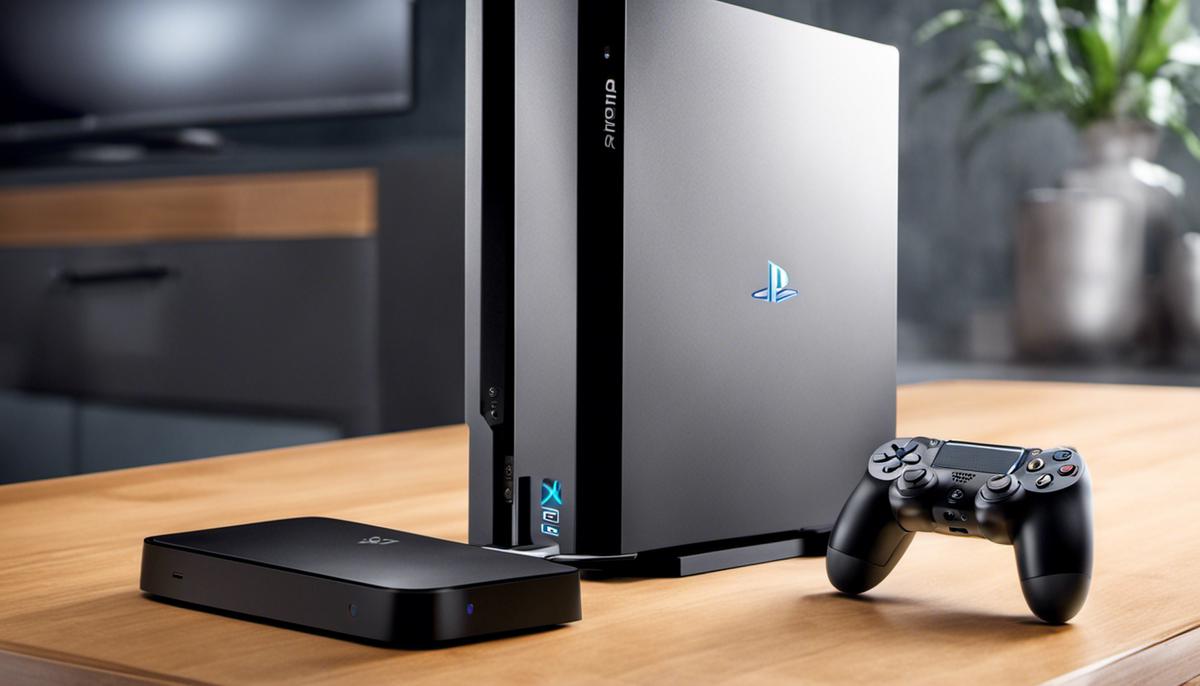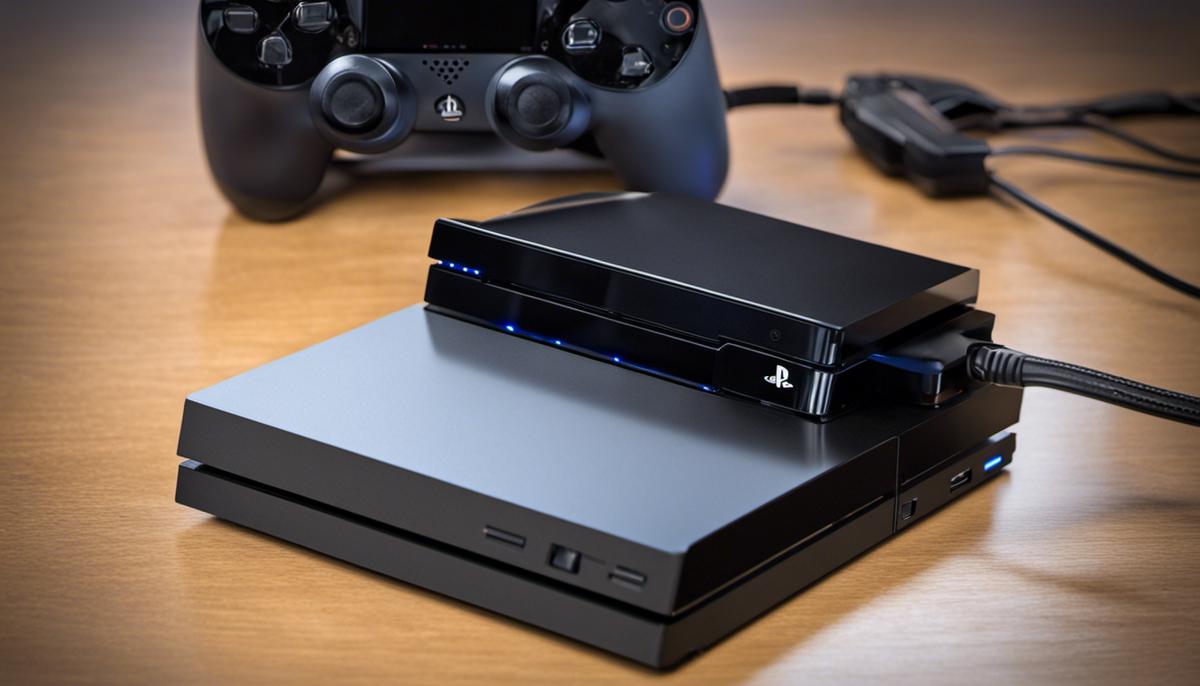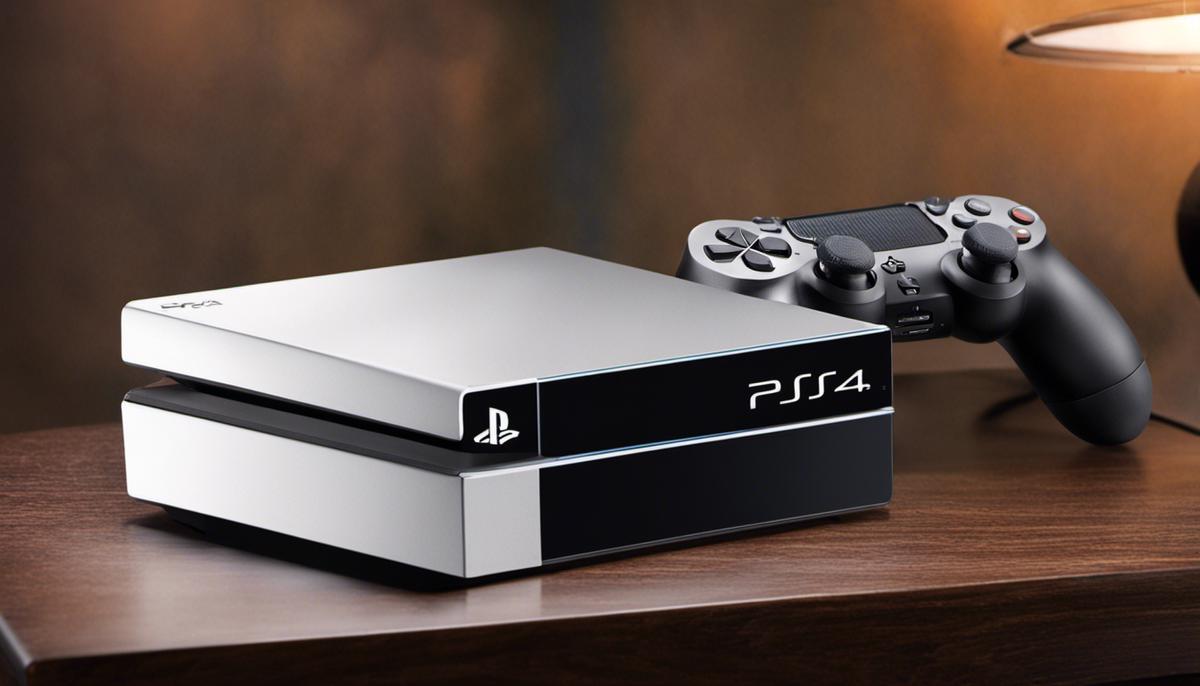In a digital era characterized by the burgeoning demand for high-quality, immersive gaming experiences, the PlayStation 4 (PS4) has emerged as a pivotal contender in the console market. However, one pressing challenge that many PS4 users consistently encounter is the limited internal disk space, struggling to accommodate the ever-growing library of games and multimedia content. As the need for extra storage surges, deploying a proficient external hard drive has become an invaluable solution. This comprehensive guide provides an overview of why external hard drives are essential for most PS4 users, how to pick the right one, detailed installation procedures, and critical maintenance practices for maximizing your hard drive’s performance and longevity.
Defining the Need for a PS4 External Hard Drive
The Crucial Role External Hard Drives Play in the PS4 Universe
The landscape of video gaming has dramatically morphed over the last decade. With advances in game design and graphics, PlayStation 4 (PS4) players continually crave more storage space. Today’s game files are larger than ever, while add-ons and DLC (downloadable content) exponentially expand the need for storage. This is why an external hard drive becomes an indispensable accessory for PS4 aficionados.
While an average PS4 comes pre-equipped with a hard drive ranging between 500GB to 1TB, it quickly becomes apparent that this doesn’t suffice in the long run. Given that a standard triple-A game requires around 40GB to 50GB of storage, and considering the additional DLC and personal content, the PS4’s in-built storage is bound to fill up rather speedily.
Investing in an external hard drive delivers an immediate solution to this challenge. Gamers can now install and store more games without being haunted by that dreaded “insufficient storage space” notification. Notably, PS4 systems support external hard drives up to 8TB, creating an almost limitless realm for gamers.
External hard drives also bring along the boon of portability. This helps gamers to carry their games with them, whether they’re visiting a friend or simply switching to a new console. The beauty of it lies in the user’s ability to plug in the external hard drive into any PS4 console and have instant access to their games and saved data.
From a performance viewpoint, there’s a common misconception that storing games on an external hard drive could lead to slow running speeds. In reality, the truth is quite the opposite. Provided a high-quality, modern external hard drive is used, the enhancement in speed is perceptible. USB 3.0 drives, the most widely recommended for PS4 use, are shockingly fast and competent, providing an excellent gaming experience.
External hard drives for PS4 also provide a remarkable layer of safety and security for the user. In case of system failure, which though rare, isn’t completely implausible, having an external backup of precious game data becomes invaluable. Transferring this data back to the system post-repair or onto a new console is simple, which saves the gamer both time and stress.
In conclusion, an external hard drive for a PS4 is not a luxury, but rather a critical component that takes the gaming experience to a new level. The storage capacity increase, the elevation in speed, enhanced portability, and added layer of security make this an irresistible engagement in the world of gaming. For any serious PS4 gaming aficionados, investing in an external hard drive becomes not only sensible but an outright necessity.

Selecting the Right PS4 External Hard Drive
Choosing the right external hard drive for your PS4 can significantly enhance your gaming experience. But the trick here is to select an apt one. You’re investing both your money and faith in it. Our recommendation would be to gather some knowledge first before you make the buy. You surely wouldn’t want to witness setbacks in the middle of a game or even worse, lose the progress you made. Let’s cut the chase and get down to the nitty-gritty right away.
It’s crucial to understand the variety of storage capacities available in external hard drives. PS4 supports up to 8TB of external storage. It offers possibility of downloading and storing more games without having to worry about running out of space. However, the need varies from gamer to gamer. Consider the types of games you play, the frequency of your downloads, and your budget before setting a specific capacity.
Next, pay heed to the hard drive speed. It has a significant role to play. For instance, a ‘7200 rpm‘ (rotation per minute) hard drive will be faster than a ‘5400 rpm‘ drive. It directly influences the loading times of games. Also, note that SSDs (solid-state drives) have greater speeds as compared to HDDs (hard disk drives), albeit at a higher cost.
It doesn’t end here. The connectivity of the external hard drive with the PS4 should be seamless and efficient to ensure top performance. Choose a drive with a USB 3.0 interface as this is the only one supported by PS4. This interface ensures quick data transfer between the console and the hard drive.
Reliability is also a crucial factor to bear in mind. The external hard drive is going to host your cherished gaming memories, so, naturally, you would want it to be dependable. Look for hard drives from established brands with good reviews and warranty coverage.
Finally, going beyond the technical details, the design of the hard drive also matters. You might prefer a hard drive that matches your gaming setup or console design. Some might look for slim and lightweight designs for comfortable portability.
Remember, the most expensive external hard drive is not necessarily the best for your console. The key is to understand your gaming habits, requirements, and budget and then decide which external hard drive fits the bill. Enjoy a seamless, upgraded gaming experience with the right drive aiding your PS4. Happy gaming!

How to Install a PS4 External Hard Drive
After understanding the role of an external hard drive in enhancing your PS4 gaming experience and what factors to consider while buying one, let’s delve into the mechanics of correctly installing it.
The first thing to note is that the external hard drive should have a USB 3.0 connection and at least 250GB storage, but not more than 8TB. This aligns with Sony’s requirements for the PlayStation 4. Look for recognizable brands like Western Digital, Toshiba, and Seagate that have a reputation for quality and reliability.
Once the ideal hard drive is in your possession, it’s time to connect it to your PS4. Turn off the PS4 completely (not in Rest Mode) and attach the hard drive to one of the PS4 USB slots. The console will detect a new USB storage device attached and will guide you through several steps to format the new drive. This formatting will delete anything currently on the hard drive and make it fully compatible with the PS4 system.
Next, navigate through the PS4 menus to enter the “Devices” section within the “Settings” menu. Select “USB Storage Devices” and, subsequently, choose your attached hard drive. If it’s not shown, ensure it meets all the required prerequisites. Once recognized, click on the “Format as Extended Storage” button, and the system will initiate the formatting process.
Once the formatting process is complete, the PS4 will automatically set the external drive as the default installation location for any new content. It’s a major convenience, especially for multi-game players. However, if you wish to alter this default setting, revisit the “Storage” section in the “Settings” menu and select “System Storage,” following which the “Applications” button will become available. From here, you can manually decide whether to install a game/application in system storage or extended storage.
Finally, transferring existing games and applications to your new external hard drive is a straightforward affair. Go to the system storage under the “Storage” setting, select “Applications,” and press “Options” on your controller. By clicking “Move to Extended Storage,” you will be able to select numerous games/applications and move them all at once to the new drive.
Remember to safely disconnect the device when it’s not in use by pressing “Stop Using Extended Storage” from the “Quick Menu”. This ensures that no data gets corrupted, and you can seamlessly resume where you left off.
Proper installation and management of an external hard drive can revolutionize your gaming experience, offering not just extra space but also portability and flexibility. So, gear up, dive into a new world of convenience, and throw storage worries to the wind. Happy gaming!

Maintaining Your PS4 External Hard Drive
Assuring Longevity of a PS4 External Hard Drive: Practical Tips and Measures
Now, onto the most vital matter – how can PS4 users ensure the longevity of their external hard drive once they’ve made the right selection and set it up properly?
- Adequate ventilation: Adequate ventilation is critical to avoiding overheating of the external hard drive, known to impact its long-term functioning adversely. Do not obstruct the vents, and keep the device away from heat sources.
- Power down Correctly: It’s necessary to power down the hard drive correctly. When not in use, use the ‘Rest Mode’ on your PS4 to avoid potential data loss or corruption.
- Regular cleaning: Dust accumulation can lead to drive overheating. A can of compressed air can effectively remove dust from the crevices of the drive.
- Avoid physical trauma: Hard drives are delicate and susceptible to damage from shocks. Hence, it’s critical to handle and position them carefully.
- Virus and malware protection: The use of reliable antivirus and antimalware software minimizes the risk of corruption or loss of stored data.
- Firmware updates: Ensure regular updating of the hard drive’s firmware. Manufacturers regularly release firmware updates to enhance the drive’s performance and rectify any bugs or glitches.
- Regular backups: Conducting regular backups can save you from unexpected drive failures, ensuring you still have access to your saved games and other data.
- Proper ejection: Always safely eject the external hard drive from the PS4 system before disconnecting it physically to avoid any potential data loss.
- Monitor drive health: Make it a habit to monitor the health of your external hard drive. Working PS4 drives tend to be quiet and do not overheat. If you notice any irregularities, it may be a sign to back up data and prepare for a drive replacement.
By adopting these practical tips and measures, PS4 users can ensure they extract the maximum out of their external hard drives, assuring its longevity and continued performance. Technology, if respected and maintained appropriately, can serve as a resilient ally in our modern lives, providing seamless experiences, such as, in this case – a fully immersive, unrestricted PS4 gaming journey.

The entire PlayStation 4 experience is engrossingly dynamic, enabling gamers to transcend conventional boundaries and explore thrilling, visually spectacular realms. Implementing an apt external hard drive serves to extend this adventure, offering much-needed storage space to accommodate your expanding array of games and media. Selection, installation, and maintenance are crucial steps in this journey, each requiring a keen understanding and careful implementation. Equipping yourself with the right knowledge can ensure a seamless, enhanced gaming encounter, keeping your digital library well-structured, secure, and easily accessible. So keep the game on because with a high-functioning, well-maintained PS4 external hard drive, the digital world is your oyster.

